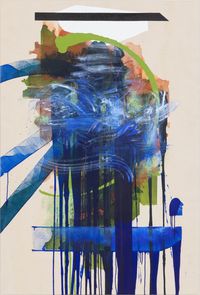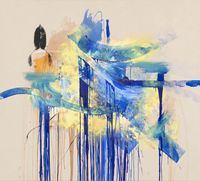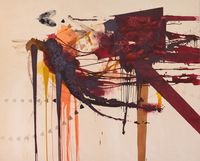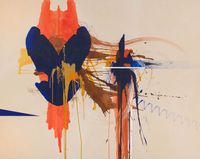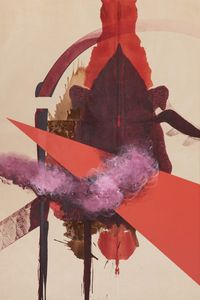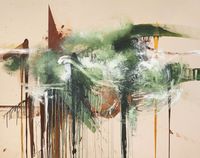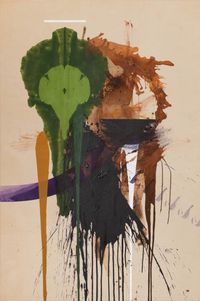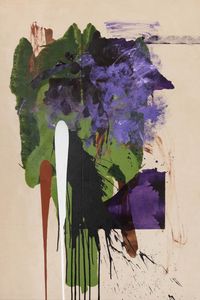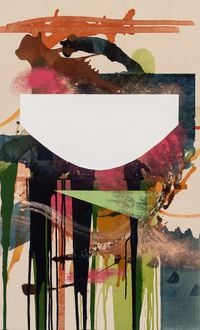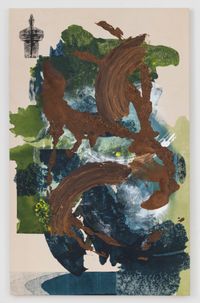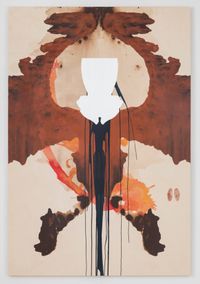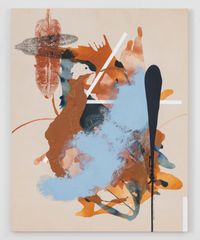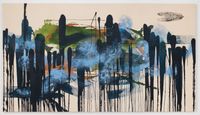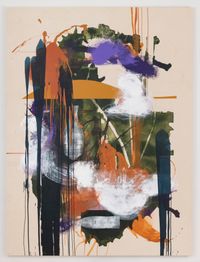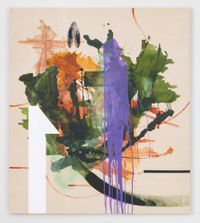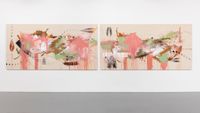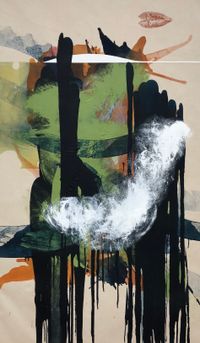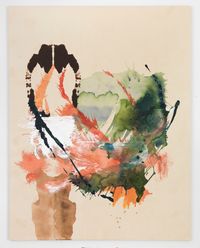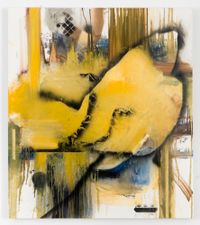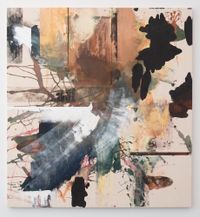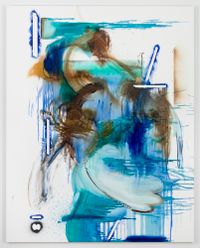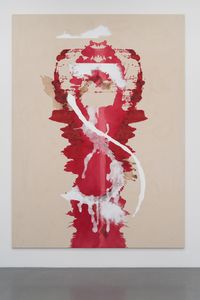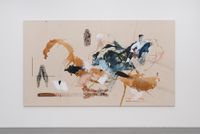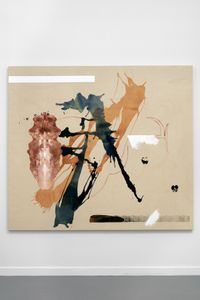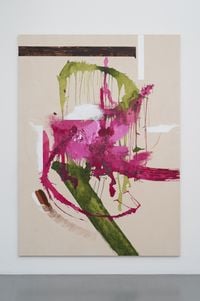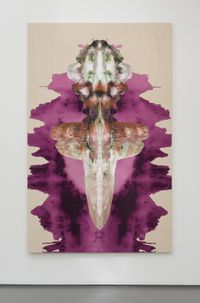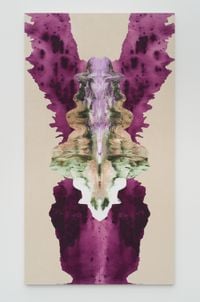Blending representational elements with abstraction, Elizabeth Neel's paintings are marked by a tension between organic and methodical forms of production. They are at once gestural and linear, thoughtful and spontaneous, demanding for full immersion.
Read MoreNeel's paintings begin from a set of ideas that are organically related and later expressed across dripping strokes, abstract forms, and arches. A degree of randomness emerges as a result, at times engaging art history and at others opening the composition up to chance.
Early works like Melting Out (2004), an aggregation of dissolving objects set in an ambiguous landscape, are inspired by photographs of Ötzi, a 5000-year-old mummy discovered in the mountainous region of the Austrian-Italian border. The painting blends varying techniques to mimic the process of decay, revealing fragments of rubbish and discarded clothing, seemingly returning to the earth.
Neel's paintings have become increasingly abstracted over the years, first offering distinct impressions of ambiguous but recognisable landscapes that incorporate cultural and historical references, but later departing from this framework.
Accordingly, acrylic paintings like Stranger's End (2021), a blend of forest green and frost white on strips of dripping yellows and brown, appear as expressive smudges, while in the bottom right corner, traces of a broken line carefully punctuate the composition.
Neel's later paintings draw from observation and photographs sourced from the Internet, which the artist first sketches onto canvas and then paints with 'varying degrees of intensity', opening into an exploration of narrative and painterly space.
Entangled forms emerge following the application of acrylic paint using diverse tools like rollers, rags, or the artist's hands. Neel has expressed a preference for acrylic paint for its light application, which allows for greater layering and a faster drying process.
Resulting works like Deposal (2021) often appear explosive, characterised by wide dripping strokes in muted palettes, at once restrained and violent. The vague hint of an insect in the upper left corner points to the figurative roots of the abstracted scene.
Neel's paintings often use abstraction to enquire into physical and psychological states, notably narrating the female experience, conveyed as emotive lyricism and violence.
In Eve (2021), a bleeding vulva-like shape framed by a dripping arch is foregrounded by a pointed red spear. Wrapped in a strip of clouded pink, the spear contrasts with the soft contours of the composition's shapes, where supple forms intertwine with the rigid.
Likewise, The Magda (2021), in which a butterfly shape sits against a bright orange backdrop with yellow and brown splatters trailing behind it, appears to allude to the violence that accompanies the supposed emancipation of women.
